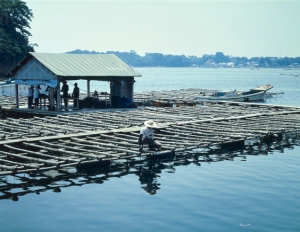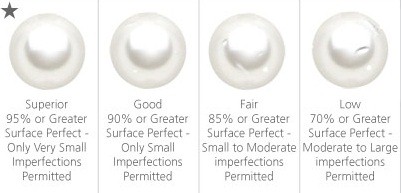Those who know me know that I have a huge passion for all that is beautiful and enormous respect for the pursuit of perfection.
Reason why, the jewelery has always been an art I admire.
From the perfection of the pieces, to their their story and from the uniqueness of the stones, to the notion of detail, all this makes the jewelery one of the most exciting arts.
“Over a century ago, Kokichi Mikimoto succeeded in creating the world’s first cultured pearl. His quest for perfection and his love for these pure, lustrous gems of the sea were the guiding forces that built the house of Mikimoto. Today, Mikimoto is the foremost producer of the finest quality cultured pearls and a world leader in the design of exceptional jewellery. The Mikimoto name is synonymous with superior quality at every stage, from the selection of finest materials to expert workmanship to the customer service commitment. Each beautiful piece reflects supreme dedication, passion and care. For today’s connoisseur of fine jewellery, Mikimoto combines timeless elegance with sophisticated, modern design.
To own Mikimoto is a unique and luxurious pleasure.
To wear Mikimoto is to reflect the purity of the ocean … the mystery of creation … and to know you are adorned with the finest cultured pearls in the world.”
One-of-a-kind necklace. A cluster of Peacock feathers made of 13.66ct of Diamonds, 4.14ct of Sapphires, 3.60ct of Green Garnets, 3.04ct of Aquamarine and 4.58ct of Tanzanite, overlap and dazzle at the neck of a four strand necklace made up of 5.5-6.5mm Akoya cultured pearls, set in 18k white gold.
PEARLS and QUALITY
Like a human being each pearl as individual as a fingerprint, making it essential to establish quality grading standards. As the Originator of Cultured Pearls, Mikimoto maintains the strictest standards.
To evaluate each peral quality we should take in count 5 factors (keep it in mind if you think to buy one):
Lustre
Lustre is considered the most important quality factor in pearls. Lustre refers both to a pearl’s brilliance — the way its surface reflects light — and its inner glow: the way it refracts light. A pearl’s lustre is generally evaluated in terms of “high” to “low,” with grades of “medium” in between.
High-lustre pearls are bright, and have a deep-seated glow. They reflect objects near them clearly. Though high-lustre pearls usually have a thick nacre coating, thick nacre doesn’t always guarantee a pearl will have high lustre. This is true because genetic imperfections in some oysters don’t allow them to secrete nacre in perfect patterns that result in high lustre.
Low-lustre pearls, on the other hand, have low reflective and refractive qualities. They may appear too white, or dull or chalky, and they usually have only marginal nacre thickness.
Surface
Surface is the second most important quality factor in pearl evaluation. Surface quality refers to the amount and kinds of flaws that appear on the outside of a pearl. Surface is generally evaluated in terms of “clean” to “heavily blemished,” with grades of blemishing in between.
“Clean” pearls have virtually no spots, bumps, pits, cracks, circles or wrinkles on them. “Heavily blemished” pearls, on the other hand, are dominated by such flaws. It’s important to note the difference between “damaging” and “non-damaging” blemishes. Damaging blemishes are those that tend to become larger over time. “Cracks” and “chips,” often near a pearl’s drill holes, are damaging blemishes. Non-damaging blemishes do not worsen over time. Spots, bumps, pits, circles, and wrinkles are considered non-damaging blemishes.
Generally, the cleaner the surface of a pearl, the more valuable it is. But it’s very important to remember that, as products of nature, pearls are almost never flawless — and imperfections, because they’re natural, don’t necessarily detract from the beauty or value of a pearl.
Color
Saltwater cultured pearls display a fascinating array of colors, the entire spectrum, in fact: from white to black, and virtually ever color in between. It’s important to note that no color is considered superior to another, and, as always, preferences are entirely up to a customer’s taste. Yet, as a general note when making suggestions: rosé and silver/white pearls tend to look best on fair skins, while cream and gold-toned pearls are more flattering to darker complexions.
Shape
Pearls are placed into eight basic shape categories: “round,” “drop,” “button” “oval,” “semi-round,” “circle — or “ringed”, “baroque,” and “semi-baroque.” Generally, the rounder the pearl, the more valuable it is. Perfectly round pearls are very rare. But though baroque pearls are often less costly, they can be just as lustrous and appealing as the round.
Size
The size of a pearl is measured in millimeters, through its diameter. Pearls can be smaller than 1 millimeter in size to as large as 20 millimeters and more. The average and most popular size sold today is 7 to 7-and-a-half millimeters. Though a pearl’s size is not an indicator of its quality, it will determine its price. With all other quality factors being equal, the larger the pearl, the more valuable it is. The reason is simple: it’s just more difficult to grow a large high-quality pearl. Therefore, pearls that are 7 millimeters and larger will always command higher prices.
MIKIMOTO history:
1893
World’s first semi-spherical cultured pearl
After years of hard work, Kokichi Mikimoto cultures a beautiful, semi-spherical pearl. A major achievement, it is the first pearl ever grown by man.
1899
Mikimoto Pearl Store opens
World’s first spherical cultured pearl
Mikimoto Gold Work Factory established
The first overseas store opens
Black South Sea pearl farm established
Five-tier pearl Pagoda at World’s Fair
Meeting with Thomas Edison
Invited to the Imperial Palace
Burning inferior pearls
Model of George Washington’s residence at World’s Fair
“Wheels of Arrows” at Paris Expo
Replica of Liberty Bell at World’s Fair
Marilyn Monroe receives Mikimoto Strand Necklace from Joe DiMaggio
Adorning his new bride with a gift deserving of her beauty, Joe DiMaggio gives Marilyn Monroe this 16-inch strand of Akoya cultured pearls during their honeymoon in Japan. Here shown in its original oval box, it is one of the few pieces of “real” jewellery she owned and treasured.
1957







